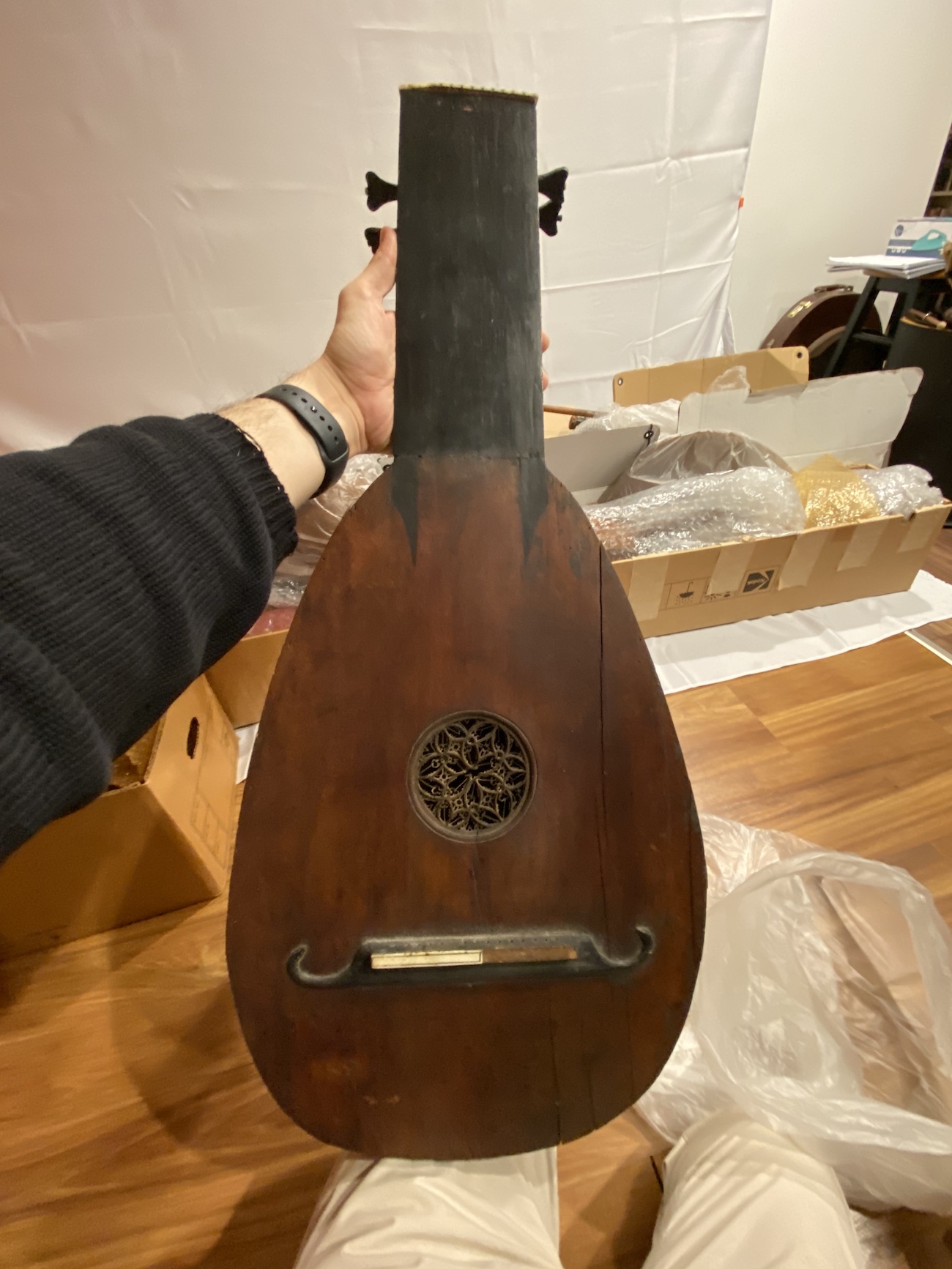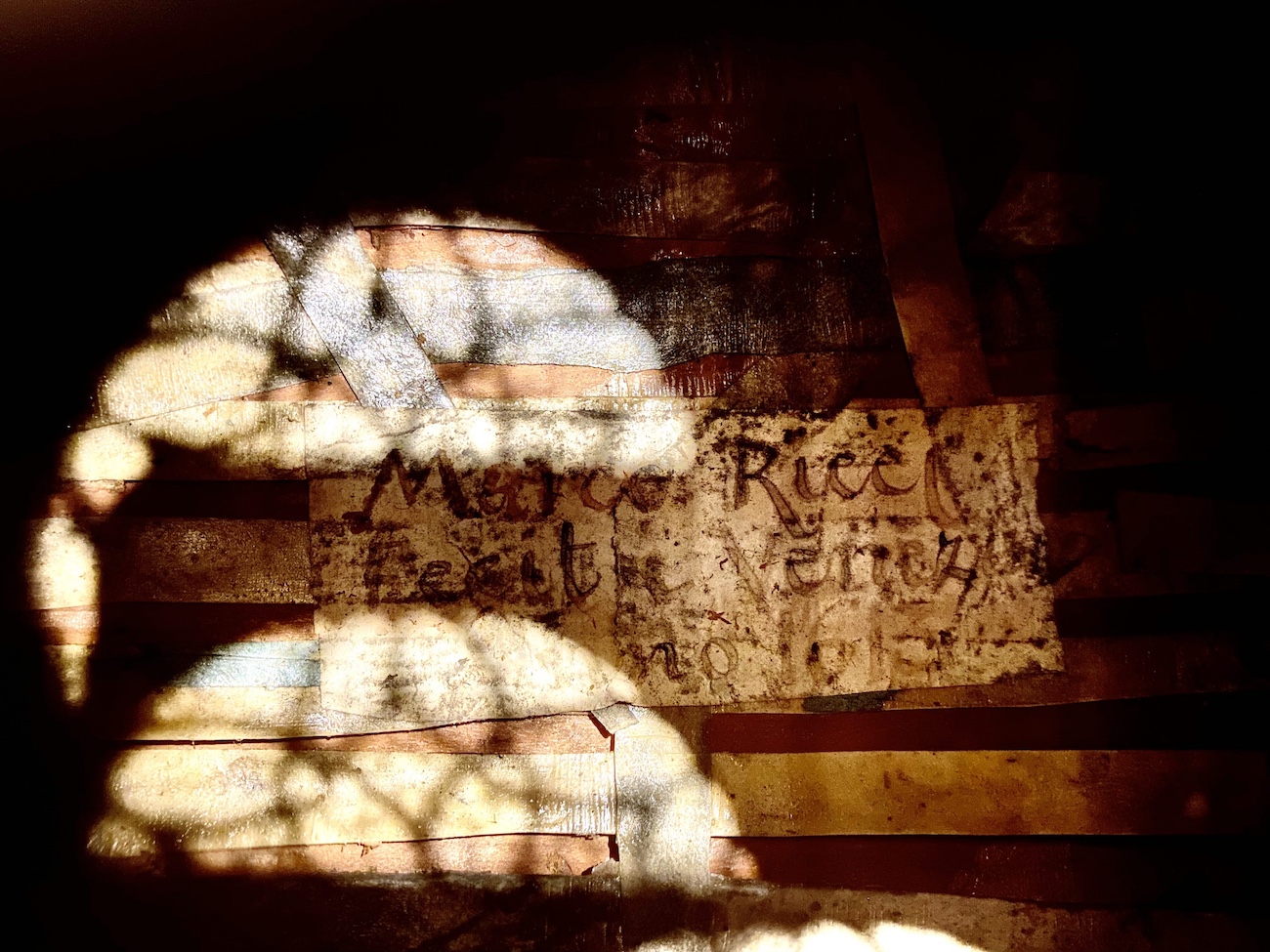New England Conservatory Donates 52 Rare, Historic Instruments for Exhibit at Sanlıkol Musical Instruments Museum in Bursa, Turkey
Visitors to the Nilüfer Municipality Dr. Hüseyin Parkan Sanlıkol Musical Instruments Museum (MEM) in Bursa, Turkey, can now enjoy a brand-new exhibit comprising 52 rare, historic musical instruments—some as old as 400 years—donated from New England Conservatory’s collection.
NEC faculty member Mehmet Ali Sanlıkol is the curator and project director for MEM, named after his father, Dr. Hüseyin Parkan Sanlıkol, who passed away in 2015. The museum’s inventory consists of about 300 instruments collected from around the world by Hüseyin Parkan Sanlıkol, who was a major supporter of musical activities and organizations in Bursa. It first opened in August 2021.
“Here at our museum, we’re keeping his collection alive while expanding it,” says Sanlıkol in a video created for Turkish Airlines, which sponsored the transportation of the instruments from Boston to Turkey. Turkish Airlines passengers may have seen the video on a recent flight.
Plans for the NEC exhibit at MEM began shortly after the museum’s opening. Sanlıkol had shared news of the new musical instruments museum in his father’s name with colleagues at NEC and was soon approached by the conservatory about its wish to donate many of the instruments held in its library for several decades to the museum. During the COVID-19 pandemic, providing the instruments with proper care became difficult, which was the catalyst for the school’s decision to donate.
NEC’s Dean of Artistic Administration invited Sanlıkol to the school’s music instrument library. “We met there, and she showed me all these instruments,” he said. “I didn’t know that NEC had that many historical instruments. I did my master’s and doctorate here, so for the past 25 years, I’ve only seen the 15 or so instruments in the Keller Room. And every single time, I’d go and take a look at them. I was always interested, but I didn’t know that this was actually a part of something much bigger.”
NEC's instrument collection began shortly after the school’s opening in 1867 by founder Eben Tourjée. Tourjée desired to create a collection similar to those found in conservatoires in Paris, Brussels, and Berlin at the time. While in 1883, a large number of Western and non-Western musical instruments were already on display at NEC, significant additions were made to the collection, such as the instruments that were first exhibited by the Japanese government at the New Orleans World Exposition in 1885 as well as a small collection of non-Western instruments in 1919.
Once Sanlıkol had said yes to NEC’s donation, the obstacle of transporting 52 highly valuable, fragile musical instruments from Boston to Bursa arose. He sent out a call for help. “I reached out to the Turkish-American Businessmen Association. I’ve always been connected to that community, so I contacted them and explained what was going on. One of the members connected me with the CEO of an export-import company, who turned out to be a real art lover and Turkish patriot.”
This individual was Mr. Emre Eldener, the CEO of KITA Logistics. Eldener helped coordinate a partnership between Sanlıkol, MEM, and Turkish Cargo, a division of Turkish Airlines, which agreed to use its jets to transport the instruments. “He said he was going to try to make this happen, and he did. He is the unsung hero in all of this.”
“We really thank Turkish Cargo here, because, thanks to their sponsorship and assistance, we were able to transport 52 of our instruments from Boston, Massachusetts to Bursa, Turkey without the slightest accident,” said Sanlıkol.
Once they landed safely in Bursa, an intensive restoration process needed to happen before each instrument, none younger than a century, could be displayed. “I really feared that part of this. Some of the instruments were in okay shape, but some of them were not,” Sanlıkol explained. He was unsure if they would be able to identify an instrument restorer in Bursa up to the massive task of restoring them all.
“My hometown of Bursa is a city of comparable dimensions to Boston. It’s a big, thriving, historically important city — it was actually the first capital of the Ottoman Empire. And it’s only two hours from Bursa to Istanbul,” he said. “I mention all of this because, while the city has all of these advantages and significance, I can't say the same for the presence of musical instrument makers. They’re more in Istanbul. So I didn’t know if there would be someone in Bursa that would be able to do the restoration.”
That’s where Murat Caf, a faculty member in the Department of Music Education at Uludağ University in Bursa, came into the picture. Sanlıkol knew Caf for many years as a piano tuner and instrument repairer but was unaware before this project that he was a masterful luthier. Caf signed on to undertake the restoration process for the instruments in the NEC exhibit and, for the next one and a half years, transformed them each to as close to their original beauty and quality as possible.
“He was so meticulous,” said Sanlıkol about Caf’s restoration. “You wouldn’t believe the transformation of some of the instruments. It’s really unbelievable the amount of work he put in.”

“There were some issues we paid special attention to during the restoration and conservation process,” Caf said in a video produced by the MEM (his words have been translated into English). “Especially on preserving the original structure of the instrument and continuing the repair within the structure. There were also various pieces broken off or missing from the instruments. These parts were manufactured by examining the instruments or by looking at photographs taken before. The origins of the instruments, the materials they were made of, and their current state were researched and recorded.”

One of Sanlıkol’s favorite instruments in the NEC exhibition is a 411-year-old Venetian lute donated to NEC when the school was first established. “This is from 1613,” he said, displaying a photograph of the markings inside the lute. “You can see the builder is Marco Ricci. Can you believe it? Holding it in my hands — this was crazy.”
On February 17, 2024, the NEC exhibition opened to the public. In celebration, Sanlıkol performed a concert with his friend and former student in NEC’s Contemporary Musical Arts department, Bulut Gülen ’19 MM.
Sanlıkol never intended to become a curator, but various projects he's participated in over the years led him to this role at MEM. Starting in 2011, he worked for two years as the primary consultant for the Turkey exhibit at the Musical Instruments Museum (MIM) in Arizona. After that, he collaborated on several projects with the Museum of Fine Arts in Boston and Houston. And now, in his role with MEM, where he carries on his father's collection, Sanlıkol reflects on the importance of a museum of its kind despite "never in his wildest dreams" thinking he would be the person curating it.
“When it’s done right, I think a museum of this type can help show people that musical heritage in the world can be very enlightening about all kinds of different cultural exchanges,” he continued. “You can see and go beyond the idea of borders and peoples. You can still see the differences, but you also experience overlaps.”
When asked what he hopes visitors will take away from the new NEC exhibit at MEM, Sanlıkol thought globally. “With the addition of the NEC instruments, now that they’re restored, I think our museum will start gaining more worldwide recognition. I participated in the last meeting of CIMCIM [The International Committee for Museums and Collections of Instruments and Music] in Amsterdam, and they were very interested in the fact that there is this unusual, beautiful musical instruments museum in Turkey and that there was a sizable donation from the United States. It was an odd, unique thing. So, now the museum is a known entity among all of these museums, and suddenly, we’re starting to get this recognition. And I think this is only going to increase.”
